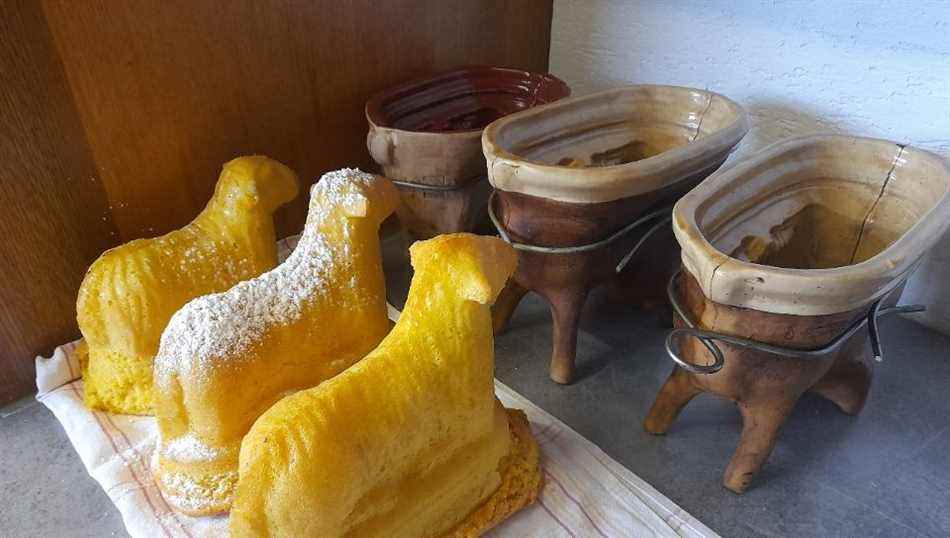This Alsatian tradition dates back to the 16th century. It was necessary to sell the mass of eggs gathered during Lent (where the egg is banned from the authorized ingredients).
the Lammele is the reward of Easter: the fiancé gave it to the fiancé, the parents gave it to the children after mass. Nowadays, some enthusiasts make dozens of them to offer to their family and friends.
The molds to make them are in terracotta and come from Soufflenheim. They are in two parts that were once assembled with small wicker rods. Today, an iron clamp is attached to hold the two parts.
There are also metal moulds, “The real Lammele is done in terracotta” says Antoine Hepp.
Ingredients for 3 lambs
- 8 medium eggs
- 200g sugar
- 220 g type 45 flour
- 5 g baking powder
- 80 g of starch
- 80 gr of slightly melted butter (around 40°C
- 1 small bottle of vanilla extract or orange zest
Implementation
Best Worker of France tricks:
- Take the eggs out in advance to work them at room temperature, the mixture is better.
- When cooking, keep the oven open about one centimeter (block the closure with a kitchen towel), so that the steam from the cooking evaporates. A pastry should always be baked dry.
Hey, let’s go.
Pass the starch, flour and baking powder through a sieve so that everything is well mixed.
Grease the mold well and sprinkle with flour.
Prepare a water bath at 40°C.
Mix with a whisk or in the bowl of a mixer placed in the bain-marie the eggs and the sugar (and the vanilla extract if you have chosen it).
Leave to cool and put the bowl in the electric appliance to mount the whole thing for ¼ hour at medium speed. You can also do it using a simple beater but count about fifteen minutes to reach the desired texture.
Gently add the previously sifted flour, baking powder and starch with a spatula.
Add the melted butter in a thin stream.
Pour into the generously buttered and floured terracotta molds. Fill them only ¾ full because the dough will swell in the oven.
Bake in a preheated oven at 170°C in ventilated heat for 45 minutes, watching closely.
Leave to cool in the moulds, then turn out onto a wire rack and sprinkle with icing sugar.
Decorate with a colored pennant planted on a stick stuck in the back of the neck or put a ribbon around the neck of the lamb.
Traditionally, a tissue paper flag is placed displaying two colors: yellow and white, which are the colors of the church, and red and white, which represent the colors of Alsace. These biscuit lambs are eaten for Easter breakfast to accompany a coffee or hot chocolate or for dessert with a fruit salad or custard accompanied by beaten eggs.
Antoine Hepp reminds us that the texture of this lamb is so tender that it is difficult to cut it into nice slices. Must wait…
Recipe taken from Antoine Hepp’s book Flavors and delicacies of Alsace (Belvedere editions)
